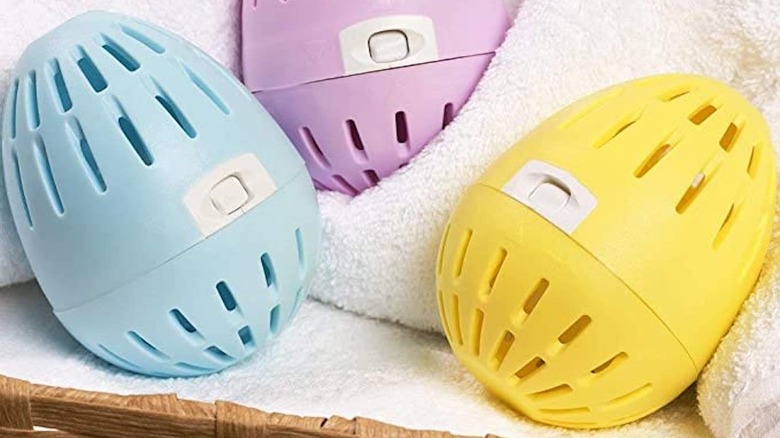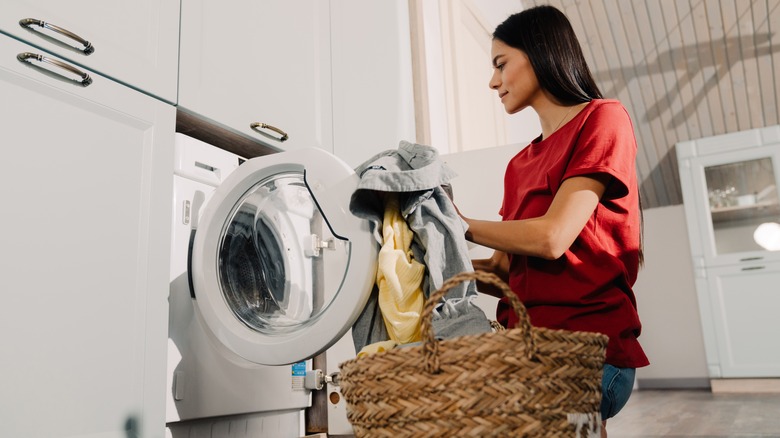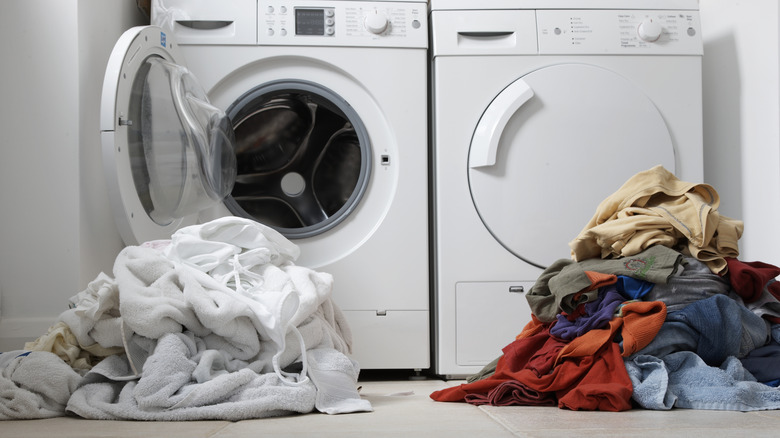What Is A Laundry Egg And How To Use It
We may receive a commission on purchases made from links.
Laundry days can be daunting when you have a long list of other chores to get through. It can also be a repetitive cycle: sort your clothes, put a load in the washer, measure out detergent and fabric softener, then transfer the load to the dryer and start your next wash. Luckily, using a laundry egg can cut back your measuring time by a couple of minutes, which adds up over time. Laundry eggs are recyclable plastic eggs that hold two types of mineral pellets and a small amount of detergent that cleans light and dark clothes like regular liquid detergent or pods.
The laundry eggs are meant to replace your general detergent and fabric softener and help reduce the consumption of single-use bottles, which can also save you money since they offer more washes. For example, the standard EcoEgg Laundry Egg provides between 70 to 720 loads that cost between $11.51 and $24.98, while a 154 fluid-ounce Tide High-Efficiency Liquid Detergent offers 107 loads for $21.49. You only need about 2 tablespoons of laundry detergent, and the laundry egg itself is easy to use. Here's everything you need to know.
How to use the laundry egg
Before using the laundry egg right away, it's vital to note how it works. The tourmaline pellets you place inside the egg help to dilute the dirt while allowing the mineral pellets to lift the filth from the fabric by ionizing the oxygen in the water and weakening adhesive forces. When doing your laundry, separate your clothes how you usually would. Prepare your laundry egg with the pellets, place your load in the washer, then pop in your egg. Ensure the egg is secure and locked in place — you don't want to leave it slightly loose or it could open and release the pellets.
You don't need to add any extra fabric softeners or detergents since the pellets have a small amount of detergent in them. However, you can use the laundry egg with stain removers or fabric conditioners. You'll want to pre-treat the stains before putting them in the washer to give them a good scrub — the laundry egg will lighten marks and stains but won't remove them completely. Once you finish your laundry, you can store the egg in your laundry room or with other cleaning supplies. It's a small egg, so it doesn't take up much room, which is ideal for folks who don't have a place for standard detergent bottles.
Benefits of using one
As aforementioned, the laundry egg can give you more washes at a lower cost, which might not feel like a difference in your wallet right away, but by the end of the year, you'll notice a change. If you buy the EcoEgg that offers 720 loads, you won't have to buy detergent for at least three years. In addition, once you run out of loads, you can buy pellets to refill your egg instead of purchasing another laundry egg. This means you can save the money you would have used to purchase detergent and fabric softener.
In addition, some detergents have chemicals that can cause skin rashes, but the laundry egg is made without chemicals, so it's safe for the skin — even if you have sensitive skin. The black ceramic tourmaline and white mineral pellets are chemical-free cleaning agents, and they're dermatologically tested and made to be hypoallergenic. Moreover, if you don't enjoy scented detergents, the laundry egg has a fragrance-free option; otherwise, you have the option of spring blossom or fresh linen.


